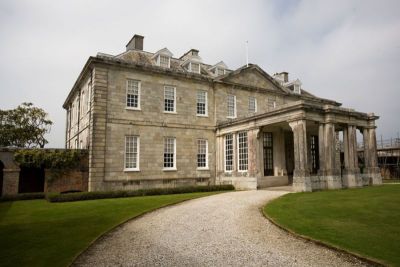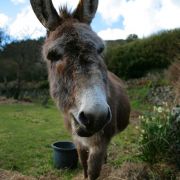
Antony House has been home to the Carew family for 600 years and is now a National Trust property close to Torpoint. The salt water pond is the earliest recorded feature in this garden, mentioned as early as 1602 and predating the present house. This now lies in the Antony Woodland Garden. The gardens were laid out formally at the time the house was built, but little survives from this era apart from the dovecote.
During the 19th century, many of the breaks in the wooded areas were created to open up views across the river. It was at this time that the yew walks were started, followed by the planting of various shrubs, including rhododendrons, magnolias and azaleas, early in the 20th century. Several gardens have been added more recently, including the enclosed Summer Garden and the Knot garden.
Many parts of the gardens are enhanced by wrought iron work and attractive sculptures. There are numerous attractive walks and many exotic varieties of plants. A huge cork tree, on the lawn to the west of the house, is very impressive. The woodlands are now run as a separate garden.
Antony Woodland Garden
The Woodland Garden was originally part of the Antony House estate, near Torpoint, but is now managed separately by the Carew Pole Charitable Trust. The salt water pond is the earliest recorded feature in this garden; an enclosed inlet designed in the 16th century to harbour various types of fish and formerly described as the Fishful Pond. This lies through the woodland to the east of the car park.
To the west, close to Jupiter Point, is a slightly more formal area, based on the late 18th century layout. There are many attractive older shrubs in this area. Several lily ponds lead towards the 18th century bath house. On the edge of the gardens at Jupiter Point, there is a memorial stone commemorating Sir John and Lady Carew Pole, who were largely responsible for the gardens to be seen today.
Also to the west of the car park are the West Downs. These woodlands contain some lovely camellias and magnolias and were planted mainly following the Second World War. The time to see these at their best is during the spring, when the ground is carpeted with bluebells, campion and wild garlic.








